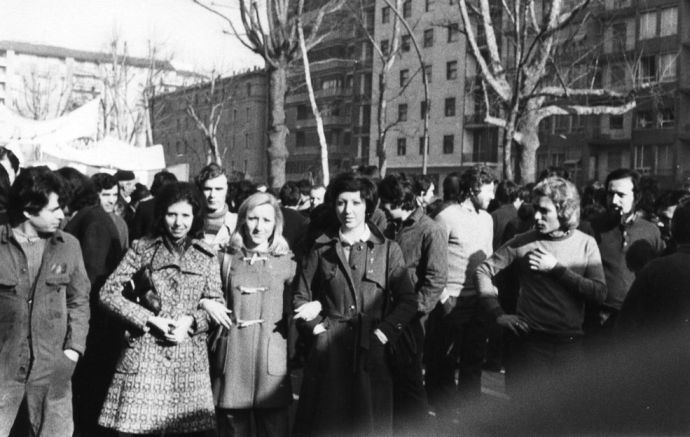At the entrance of the Portello plant, before 8:30, the Alfa Romeo girls quickened
their step to reach the filing cabinet. They often got in in small groups because
it was unavoidable that someone met at the Bullona train stop, or at the tram one
and went part of the way together. They looked like a colour palette in their red,
black, beige, brown overcoats.
There were the married ones always in a race against time because of the sons to
bring to the kindergarten or to school, and there were the already engaged ones,
and the “free” ones; a lot of the last would not have remained so a long time because
they would have found love among the fellow workers.

They came from every district of Milan, the Alfa girls and, after the last hooter
notice, by the hundreds and hundreds they came into bays and offices to operate
machineries, calculators, typewriters.
An ordered and silent army always ready to work together and solve even the smallest
problem with great reliability and commitment. They were quick and precise, they
could smile even when they were tired and in a bad mood.
The Alfa girls used to wear an apron that had been black-coloured till the beginning
of the Seventies, then a blue colour was chosen, whereas it was white for the girls
of data processing centre. Till the end of the Fifties, the employees had to buy it
themselves, afterwards it was supplied ready-made or as cloth to make.
They were not all equal, the aprons of the Alfa girls, since anyone of them had it
made to measure according to their own taste up to let it look like a lovely dress.
Not every Alfa girls used to wear it willingly, someone thought it was mortifying
their femininity and also a bit discriminating, especially the office workers who
saw that their male colleagues did not wear any.
The Alfa girls started to claim work and salary equality as they often felt relegated
to the lowest steps of a staircase with scarce possibilities of climbing up. In the
spring of 1970, the office workers awoke to this problem and constitute a Study Group
in order to identify the most immediate objectives and endeavour to achieve them, an
experience that turned out to be interesting and was a step ahead towards the emancipation
of the womens’ work which lead for the first time, in 1979, eleven girls to work in the Foundry.
During the break, the Alfa girls were passing by and their laughter sounded like the bird twittering.
They run, the Alfa girls, and the clicking of their steps sounded like a joyful rithm.
After a day of work, they rushed to clock out because their day had not finished yet.
They got out to come back home to do thousand and one other things.
The contribution that the Alfa girls made with their work in the offices and on
the assembly lines was significant even if not always appreciated as that of their
male colleagues. If we skim through the many books written on Alfa Romeo, we do
not find any women, unless it is about racing car driver women, yet every president,
designer and technician has been always assisted and supported by women who had worked
with competence, commitment and pride to belong to a glorious brand, by contributing
to build, day after day, the Alfa myth.

